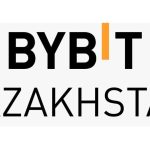The Waldriberti Financial (WLFI) protocol, a blockchain investment venture led by Trump Sun Street, has seen its wallet balance surge to an impressive $3.8 billion this week, according to data from Cryptorank.io.
This significant growth highlights the increasing influence and strategic investments of WLFI in the crypto market, with holdings primarily in Ethereum (ETH), Wrapped Bitcoin (WBTC), and TRON (TRX).

Key Highlights of WLFI’s Wallet Balance
- Total Wallet Balance
- WLFI’s wallet balance now stands at $3.8 billion, showcasing steady growth in its crypto assets.
- Asset Breakdown
- Ethereum (ETH): $2.39 billion
- Wrapped Bitcoin (WBTC): $58.3 million
- TRON (TRX): $10.5 million
- Steady Accumulation
- The increase in WLFI’s holdings reflects a strategic accumulation of high-value digital assets.
What Is Waldriberti Financial (WLFI)?
Waldriberti Financial is a DeFi protocol reportedly led by Trump Sun Street, focusing on blockchain investments and innovative financial strategies.
- Primary Objectives:
- Facilitate asset diversification in the crypto space.
- Promote investment in blockchain-based financial solutions.
- Core Holdings:
- WLFI’s portfolio indicates a preference for blue-chip cryptocurrencies, emphasizing long-term growth and stability.
Analysis of WLFI’s Crypto Holdings
- Ethereum (ETH)
- Holding Value: $2.39 billion
- Significance: Ethereum’s dominance in the DeFi and smart contract ecosystem makes it a cornerstone of WLFI’s portfolio.
- Wrapped Bitcoin (WBTC)
- Holding Value: $58.3 million
- Significance: WBTC provides Bitcoin’s value while enabling participation in Ethereum-based DeFi protocols.
- TRON (TRX)
- Holding Value: $10.5 million
- Significance: TRX’s growing utility in blockchain-based applications highlights WLFI’s focus on diverse blockchain networks.
Market Impact and Implications
- Growing Institutional Presence
- WLFI’s increasing balance underscores the growing institutional participation in the cryptocurrency market.
- Long-Term Strategy
- The concentration in ETH and WBTC suggests a long-term investment strategy, capitalizing on the growth of established networks.
- Blockchain Diversification
- Including TRX in the portfolio reflects WLFI’s efforts to diversify across different blockchain ecosystems.
Community Reactions
The crypto community has taken note of WLFI’s wallet balance increase:
- Optimism About DeFi Growth
- Many view WLFI’s investments as a vote of confidence in Ethereum and the broader DeFi space.
- Speculation on TRON’s Role
- The inclusion of TRX has sparked discussions about TRON’s future in decentralized finance and blockchain applications.
Conclusion
The $3.8 billion wallet balance of Waldriberti Financial highlights its strategic focus on Ethereum, Bitcoin, and TRON, signaling confidence in these assets’ long-term potential. WLFI’s growth showcases the increasing role of institutional players in driving cryptocurrency adoption and market dynamics.
As blockchain technology continues to evolve, WLFI’s approach serves as a case study for the strategic allocation of crypto assets in a rapidly changing financial landscape.
For more insights into institutional crypto strategies and blockchain innovation, explore our latest articles.
FAQs
What is the Waldriberti Financial (WLFI) protocol?
WLFI is a DeFi protocol led by Trump Sun Street, focusing on blockchain investments and crypto asset management.
What are WLFI’s primary holdings?
WLFI’s portfolio includes $2.39 billion in Ethereum (ETH), $58.3 million in Wrapped Bitcoin (WBTC), and $10.5 million in TRON (TRX).
Why is Ethereum a major part of WLFI’s portfolio?
Ethereum is a dominant force in the DeFi and smart contract ecosystem, making it a cornerstone for long-term blockchain investment strategies.
What does WLFI’s investment in TRON signify?
WLFI’s TRX holdings highlight its strategy to diversify across blockchain networks with growing utility in decentralized applications.
How does WLFI’s wallet balance reflect market trends?
The increase in WLFI’s wallet balance underscores the growing role of institutional players in driving adoption and supporting major blockchain networks.
To learn more about the innovative startups shaping the future of the crypto industry, explore our article on latest news, where we delve into the most promising ventures and their potential to disrupt traditional industries.






